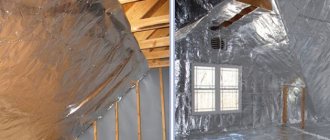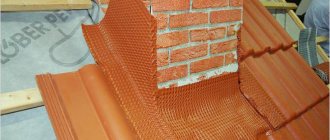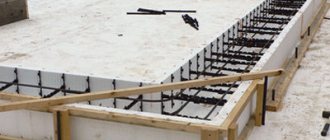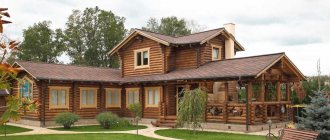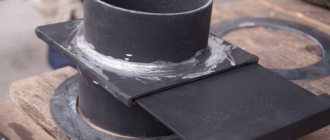Currently, the demand for healthy, environmentally friendly housing is constantly growing.
Many homeowners, when building cottages for their families, prefer to purchase natural building materials. One of them is beautiful, reliable and durable ceramic tiles. Clay tiles are the oldest material made from natural raw materials, and have been used as roofing for more than four thousand years. .[contents]
Different shapes of clay tiles
Roofing with clay tiles and its installation emphasizes the exquisite charm of not only fashionable mansions, ancient castles, temples and churches, but also completely modern buildings. In many Western countries, for example, in Germany, more than half of all buildings are faced with such tiles. Ceramic tiles are considered one of the most popular materials in Europe not only because of their excellent qualities, but also because of their relatively low cost. The presence of many quarries for clay extraction significantly reduces the cost of material for the manufacturing companies that own them.
Meanwhile, this Russian roofing covering has long had its own niche in the domestic market, although it is used mainly for expensive mansions and status objects. However, recently sales of natural tiles have noticeably intensified, due to the emergence of many new buildings in need of prestigious finishing. In addition, clay tiles are used for the restoration of churches and ancient mansions.
Natural ceramic tiles - making clay tiles with your own hands
For a long time, when building a personal bathhouse on a site, the material for the roofing of its roof was made with one’s own hands.
Moreover, only environmentally friendly and cost-effective materials were used - such as clay. That is why today, in the technogenic age, where even in the process of building houses practically nothing natural is used, ceramic tiles as a roofing material have become again in demand and popular. Moreover, clay tiles for the roof of your bathhouse can be made without the help of specialists - just like the old fashioned way. Ceramic tiles have gained their popularity due to the naturalness of their material.
Tile installation technology
Note that a roof made of tiles (any) is assembled using almost the same technology. There are, of course, certain differences that relate to the shape and design features of the material. But the basic sequence of operations is the same.
Any installation process begins with design and calculations. Both stages are not easy, the quality of the final result depends on them, so they should be handled by professionals. The only thing we note is that in the process of carrying out calculations, the amount of required roofing material is determined, as well as the number of additional elements: ridge, valley, eaves overhangs, ventilation grilles, etc.
Be sure to carry out a calculation of the rafter system. Tile is a heavy material, which means that powerful rafters and sheathing elements will have to be installed under it. Therefore, at the design stage, the cross-sections of the required lumber and the step of their installation are calculated.
Installation of all types of tiles is the same Source memphite.com
Stage I. Clay selection
The quality of the clay directly determines how durable and aesthetically pleasing ceramic tiles will be. It is best to take the clay that is usually used for making pots: not greasy, but not too sandy. Because natural tiles made from too fatty clay will begin to warp and crack when dried, and those made from thin clay will intensively absorb moisture and will not tolerate frost well . The clay should be viscous, soft and clean. Here's how you can determine its quality:
- Method 1. Crush a lump of clay and throw it forcefully onto the floor. It should be flattened like dough into a flat cake - without cracks and without crumbling pieces.
- Method 2. Rub the clay between your fingers – you shouldn’t feel any sand.
- Method 3. Knead the clay and try to make shapes out of it. It must be plastic.
And for even greater reliability, one ceramic tile is made from the selected clay for testing. If the clay was suitable, then:
- the color will be even, red;
- the surface will have an even glassy coating, without any distortions or cracks;
- high-quality ceramic tiles immersed in water should not greatly increase in weight;
- when hitting the tiles, a clear metallic ringing sound will be heard;
- the finished ceramic tile laid on two bars should easily support an adult standing on it;
- the total volume of one tile during firing did not decrease by more than 5%;
- When broken, good ceramic tiles will be the same color without bubbles.
Ceramic tiles: production and its design
Elements of a tiled roof
Even before entering the factory, the clay raw materials extracted from the quarry are cleaned of foreign impurities and inclusions.
The process of its primary processing and preparation is quite complex and labor-intensive: the resulting mixture must be homogeneous and have minimal porosity. The clay is crushed and crushed in special machines, then goes into storage for a while.
Only after a certain period of time, after a series of preparatory operations, the mass is fed to the production line. A specially developed multi-phase process gives the individual grains of the material a minimum size, which provides the raw material with the required plasticity index.
The direct process of manufacturing the material is divided into separate stages. To make the material, it is possible to use clay of various types, which is mixed in specified proportions.
From it, blanks of the desired shape are formed, which need to be dried. They must be dried to such an extent that no more than 5-6% moisture remains in them to eliminate the possibility of deformation of the tiles. Then it is coated with a special composition and fired at high temperatures (more than 1000 degrees) in tunnel kilns.
Previously, before the advent of modern technologies, it was difficult to provide a standard size of tiles on an industrial scale so that they were all the same.
Now this problem does not exist; individual products have a given size, which greatly simplifies the installation process.
Molding is carried out in two different ways:
- l
ribbon - the finished tape is cut into separate plates-tiles; - stamping - each individual tile is cast into a metal mold.
The dried product must be painted. For red-colored products, this step is skipped - this is the natural color of the tiles. To give a different color, they undergo a process of glazing or engobing. Engobe is powdery liquid clay.
The minerals contained in it acquire the desired shades when fired. The tiles painted in this way, even after time, do not lose their brightness, do not fade or become covered with moss.
The glaze is a glassy mass with a high content of quartz. For coloring, it is applied to the surface of the product just before firing. As a result, a glossy shiny layer is formed on them, which serves as protection from adverse and aggressive influences.
The material processed by this method is more dense and durable, it is not afraid of water and is able to remain unchanged for a long time.
The possible colors of ceramic tiles are very diverse. To acquire the desired shade, oxides of manganese, copper, cobalt, vanadium, chromium, iron and nickel are introduced into the glaze and clay.
Stage II. Preparing clay
Once a good clay has been selected, it can begin to be prepared for processing. Typically, clay is prepared for tiles at any time of the year, but it still needs to survive the winter.
So, the clay taken out of the ground needs to be piled on the ground surface in the form of ridges 2 m wide and 70 cm high. Such ridges are usually called stacks. This is how the clay will have to lie until it warms up - it will get wet from the rains in the fall, freeze in the winter, and thaw in the spring. After all this it will be much easier to process. And in order for the clay to freeze better, it is advisable to periodically stir the piles and even fill them with water. After all, the longer it is frozen, the better. Even if the clay lies like this for several years, it will only benefit it.
Stages
The installation process has several stages:
- Waterproofing is laid on the rafters.
- Afterwards the vapor barrier is fixed.
- The counter-lattice is being installed.
- The beams are laid, onto which the tiles are then fixed. What lathing pitch should I choose? This will depend on the length of the shingles. If there is an overlap, then it is 70-80 centimeters.
Stage III. Preparing clay for processing
Before processing, the frozen clay needs to be soaked, and after two or three days you can begin to knead it. For this, there is a clay grinder, which you can make yourself from a wooden barrel or thick boards in the form of a box. A wooden or iron axle must be inserted inside the clay grinder, and iron knives must be screwed onto it. The mechanism is similar to twisting meat in a meat grinder. And for better mixing, you can place additional knives on the sides of the clay grinder. It is better to mix the clay itself at least twice.
Stage IV. Shaping the tiles
The easiest way to make flat ceramic roofing tiles. To do this, you will need a wooden or iron molding frame with a handle with dimensions of 33x21 cm, and a thickness of slightly more than 2.5 cm. A board will be attached to the frame as a movable bottom, which will precisely pass through the frame and be equal in thickness to 1.25 cm, and also have a cutout at the top for a tenon.
So, a frame is placed on the desktop, and a board with a cutout is placed in it. All this is sprinkled with ash or dry sand. A large lump of already crumpled clay is placed on the table nearby and given the shape of a cube. Next, several layers with a thickness of 2 cm are cut using stretched thin steel wire.
Now one layer of clay is taken, placed in a frame and strongly compressed where the tile should have a spike. Then a lump of clay is added and a rolling pin dipped in water (to prevent it from sticking) is used to clean off the excess clay from the frame itself. After all this, the frame must be carefully removed, and the ceramic tile itself is covered with a drying board. Next you need to turn it over and remove the board. And that’s it - the tiles can be placed on drying shelves. The main thing is that when forming the tiles, the layer is cut so that the frame is completely filled, because after firing the added clay will lag behind.
Forming Roman or Dutch tiles is a little more difficult, but this technology can be mastered without any experience. There are even statistics that one worker alone is able to make such 500 pieces per day.
But the installation of natural tiles has its own characteristics . So, for the roof ridges, special ceramic tiles are prepared, called ridge tiles.
Types of clay tiles
There are many colors and shapes, but there are only three types, and they are worth noting. What everyone can find in the store:
- Flat tiles. It is similar to the design of a shovel. Quite suitable for buildings with complex lines. Installation is carried out with a slight overlap, comparable to scales. This will completely prevent moisture from entering.
- Grooved. It would also be quite appropriate for roofs with an extraordinary design. This design is made in two layers. These are concave and convex shards. They are connected in pairs so that the structure looks good and provides maximum protection. Because of this, the material consumption becomes 2 times greater.
- Wave-like appearance. Most often found on country houses, it looks beautiful. There are two varieties - one- and two-wave.
Ceramic tiles have special grooves in their design, so waste water quickly drains away and the level of reliability does not decrease. There are also groove designs. They are easier to work with - even a beginner can handle the installation. Before you go to the store, you should understand what is most suitable and in which direction to make your choice.
Stage VI. Treatment
Fired natural tiles do not always have a perfectly even color, and therefore they are often pre-processed. Basically this is glazing. The tiles are covered with a special glassy layer, which makes them more beautiful. But this is quite an expensive pleasure, and therefore more often glaze is applied to the tiles, which is made from red, pure, fatty clay. It is first dried and ground, and then diluted with water like thick milk. Before firing, the clay is dipped into such a solution and again placed on the drying shelf. After firing, the tiles turn out to be an even red color, with improved qualities and an extended service life.
VII stage. Burning
Firing is the most crucial moment in the production of tiles. The tiles need to be fired in special kilns called batch kilns. These can be seen in old Dutch villages, and it is quite possible to design something similar according to a similar scheme on your own site, albeit of a smaller size.
So, a kiln for firing tiles consists of four compartments - a firebox, an ash pan, a firing chamber and a pipe. Behind the firebox there is a wall with holes, which separates it from the firing chamber. Once the chamber is fully loaded with tiles, a temporary wall with holes will be laid in the back of the chamber. Also in such a furnace a special valve is installed to reduce or increase draft, and the furnace itself is covered with a roof.
By the way, at the back of such a stove there is always a larger hole for unloading and loading tiles. And during firing, it is laid with bricks or covered with sand to reduce heat loss. But a small door is always left in order to observe the progress of firing and take samples.
The tiles themselves can be laid for firing in different ways: vertically, if they are Dutch or Tatar tiles, and sideways on the edge, if they are flat. But any tiles should stand vertically, at a short distance from each other and without any tilt. To prevent it from tilting, you can wedge it with pieces of broken and already burned pieces.
The tiles need to be fired until they become slightly vitrified on their surface. In general, vitrification is a sign of overburning of the tiles, but it is better to overcook them in the fire than to underbake them. Typically, the longer a tile lasts in the oven, the stronger it is. And the installation of ceramic tiles with burnout is a guarantee of special strength and durability of the roof . But without fanaticism, it is quite possible to completely burn the clay.
Ceramic tiles: types
This material is classified depending on size into large-format and small-format.
Also, tiles may differ in the shape of the tiles. Low-profile products are usually considered traditional. But, besides them, flat, S-shaped, “beaver tail”, grooved, Romanesque and others are produced.
The oldest is considered to be the “beaver tail”, which looks like a simple plate, rounded along one edge. Groove-type tiles are extremely convenient to use: they provide strong adhesion of individual elements to each other. In addition to shape and size, clay tiles can differ in their surface texture and color.
VIII stage. Sorting
After the tiles have cooled, they are removed from the kiln and sorted. So, for the roof, all of it must be straight, clear, without cracks and evenly colored. And the rest of the tiles can be safely used to cover awnings. The tiles should be stored under a shelter, with good protection from snow and rain. And the bottom rows should not lie on the ground, but on boards.
All tile roofs are durable, easy to maintain and very beautiful. And installing ceramic tiles will not be difficult even for a novice builder - everything is extremely simple . The steeper the slope, the better for the tile itself - the less snow will linger on it. But in hot areas, tiles can also be used to cover flat roofs.
Source
Dimensions
In this parameter (weight m2), ceramic tiles are superior to many roofing coverings - they are heavy. There are from 40 to 70 kilograms of weight per square meter. Specific values depend on the size of the tiles.
In the classic version, one element weighs about 4.5 kilograms. As a sheathing for such a heavy roof, it is necessary to use a continuous type of flooring, and also to strengthen the legs of the rafters. Next, let's talk about the dimensions (length, width, thickness) of ceramic tiles.
Dimensions
This specific characteristic is not regulated - each manufacturer has its own linear dimensions, depending on the specific brand.
But most often the tiles have dimensions of 24 by 39 or 33 by 42 centimeters. GOST prescribes the size of chips or curvatures to be no more than 3 millimeters, and tolerances of no more than 5 millimeters along the length of products and no more than 3 millimeters for the width of products. Read below about the technical characteristics of ceramic tiles.
How to make your own clay tiles
It's amazing how life changes. Much of what we now habitually buy in stores ready-made, 100 years ago people did it with their own hands: grind flour, bake bread, spin, weave, etc. They also built houses on their own, including preparing building materials: sawing timber, making boards and bricks, burning lime.
But even in periods closer to our time, people were forced to return to economic “self-service”, remembering ancient methods and technologies. They were forced to do this either by the post-war devastation and the accompanying hunger for goods, or by being abandoned to the mercy of fate by the authorities. From those times, not only objects made by the hands of our grandfathers or the houses they built remained, but also a lot of literature devoted to the handicraft production of a wide variety of goods.
Holding in your hands such books and brochures, published, as a rule, in the 20s or 40s of the 20th century, is very interesting. Moreover, this interest is not only historical. The fact is that the traditional technologies to which these manuals are devoted are interesting today due to the fact that they were based on the use of predominantly local natural materials - environmentally friendly and economically profitable. And this is already a reason for people who are tired of the dirt of modern production and constantly rising prices in the construction markets to become interested in them.
Books of this kind also include the brochure by engineer A. Skachkov “Fireproof roof made of clay tiles,” published in 1925 in the series “Peasant’s Insurance Library.” It describes in detail how to make clay tiles with your own hands. We provide a short description of this technology.
What tools are required for the job?
Before you start, you need to prepare everything you need. The first is the tools:
- Cutter.
- Screwdriver.
- Roulette.
- Hammer.
Tiles and any additional components are also purchased. Do not forget about vapor and waterproofing. All this is available at the building materials store. Most often, the roof is assembled using grooves. Although there are also components that need to be placed on adhesive masses.
Tile molding
The easiest way to form flat tiles. To make it, you must have a wooden or iron molding frame with a handle. The internal dimensions of the frame are 33x21 cm with a thickness of slightly greater than 2.5 cm.
The frame is accompanied by a board (movable bottom), which must pass exactly through the frame and be 1.25 cm thick, and have a cutout at the top for a tenon.
Making flat tiles is simple. A frame is placed on the work table, and a board with a cutout is placed in it, and the whole thing is lightly sprinkled with dry sand or ash. You need to place a large lump of crumpled clay on the table nearby and give it the shape of a cube. Then, with a bow and a bowstring made of thin steel wire, several layers 2 cm thick are cut. This is easy to do in “formwork” made of wooden blocks 2 cm thick. After molding the cube, the top bars on each side need to be removed and the layer cut, moving the beam along the bars. After this, you need to remove the next row of bars and repeat everything.
After this, they take one layer of clay and put it in a frame, press hard in the place where the thorn should be, and then add a lump of clay here. After this, take a rolling pin, wash it in a tub of water so that the clay does not stick to it, and clean off the excess clay from the frame, after which the frame is carefully removed. A drying frame is placed on top of the tiles, they are turned over and, after removing the board, the tiles are taken to the drying shelves.
When molding tiles, it is necessary to cut layers of such size that they fill the entire frame, since the addition of clay is harmful and after firing it lags behind the tiles. The molding of Tatar (Roman) or Dutch (grooved) tiles is also described in the book by A. Skachkov. This process is somewhat more complicated, but, as experience shows, any person can master this technology in a day or two. One worker can mold from 500 blanks per day.
For roof ridges, special tiles are prepared, which are called ridge tiles.
Installation direction
The direction of installation of clay tiles is from top to bottom and from left to right. When all the rows are laid, you need to cut off the protruding parts of the material that will extend beyond the joints. To prevent warm air from collecting under the roof, it is worth creating a steam outlet. This is done at the level of fixing the waterproofing. For this, holes are created.
There are also situations when you need to cut off a small part. How to do it? Experts recommend soaking any type of clay tile for about 24 hours and then performing the necessary actions. It's not that difficult.
It must be remembered that there are many manufacturers on the market, but out of all the variety, you should give preference to the most reliable and proven ones.
Drying tiles
Proper drying of shingles is of great importance. If drying quickly and unevenly, the tiles may warp and crack, so drying should occur slowly and evenly over the entire surface of the tiles.
The damper the clay was during molding, the easier it is for water to come out of it when drying, and vice versa - the more tightly the clay was mixed, the slower the tile dries. This may cause more cracks to appear.


